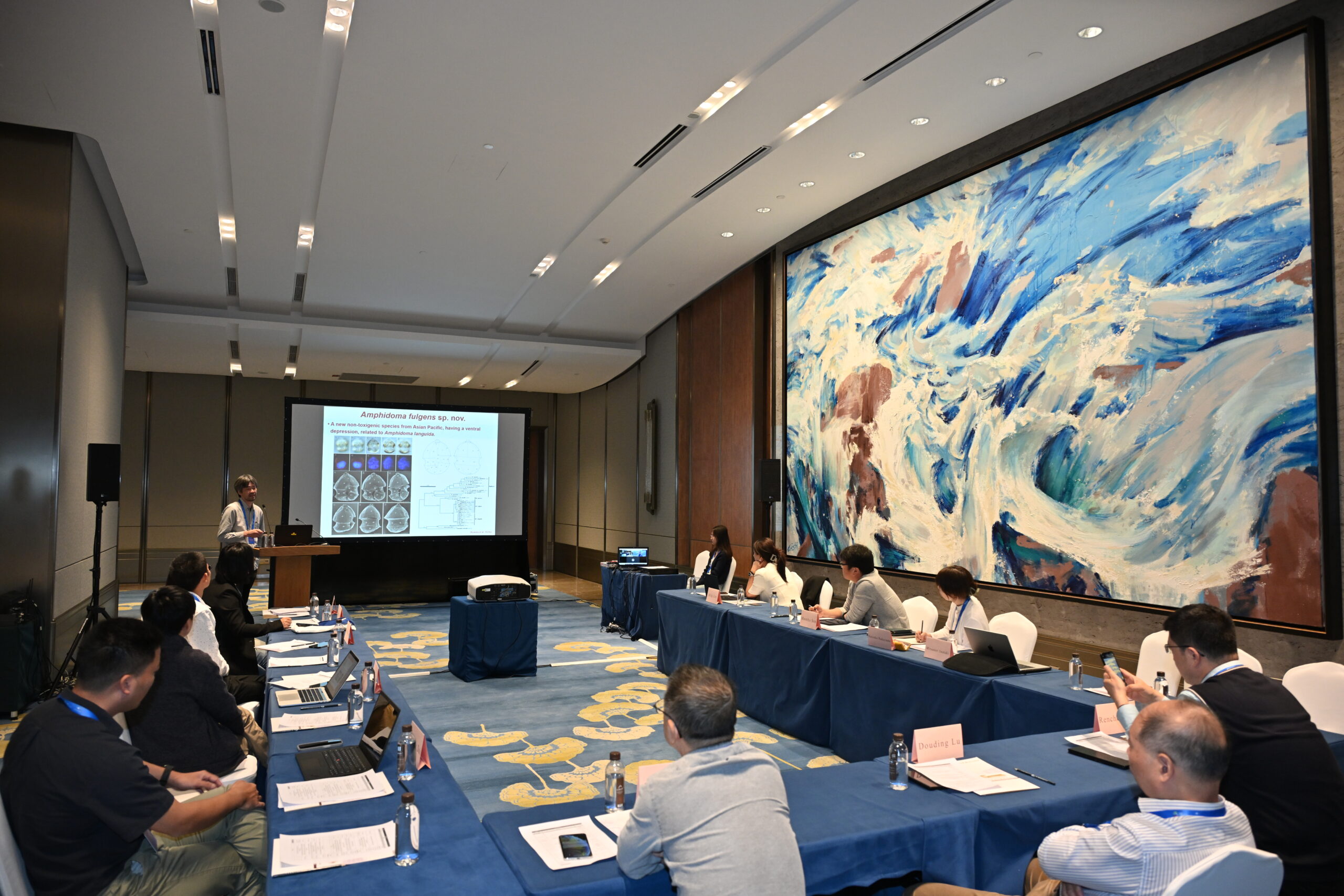ST 2.12

The 13th EastHAB Symposium was held on 7 November 2024 at the Xiamen International conference Center in Xiamen. Delegates from China, Korea, the Philippines and Japan attend the symposium. (PRF)
“The main objective of EASTHAB is to share HAB information and collaborate in HAB research activities among scientists in the Asian region,” co-chair of 13th East-HAB professor Douding Lu said.
This is the 20th year of the EastHAB Symposium, with delegates from China, Korea, Japan and the Philippines attending in full force. As one of the sponsors of East-HAB, professor Douding Lu from the second institute of oceanography, MNR, reviewed 20 years history and process of East-HAB.
The executive director of the National Key Lab of Satellite Ocean Environment Dynamics, Professor Feng ZHOU was selected as the new Scientific Steering committee member of China. Focal point of China at the IOC-FAO Intergovernmental Panel on Harmful Algae Blooms (IPHAB) Dr. Pengbin Wang emphasized the importance of regional and international cooperation under the background of the Ocean Decade.
Delegates from China, Japan, and Korea reported the recent years HAB status of in each country. The HAB causing species is changing in recent years in the East Asian Seas. The major causing species of HAB in Korea changed from Margalefidinium (Cochlodinium) polykrikoides to Alexandrium. However, Cochlodinium polykrikoides caused algal blooms to increase in 2023 in Chinese coastal waters. The Karenia mikimotoi and Noctiluca scintillans are common HAB causing species, and the PSP producing algae such as Alexandrium and Gymnodinium is also popular in East Asian Sea.
The qPCR and next generation sequencing is the efficiency technique to detect the HAB species and the session unveiled that the 14th East-HAB symposium will be held in Japan.
“In the past 20 years, the EastHAB community shared lots of information about HAB status in the East Asian Sea, and the community will continue to share information and collaborate in the future,” concluded the speakers.
This session aligns with Action 2 of the Xiamen Ministerial Declaration by considering science-based data and information to support planning, policy development, and investment decision–making, particularly for sectors affected by red tide outbreaks.
The session strengthens research and regional exchanges on new and potential red tide-causing species at multiple levels, including between intergovernmental and scientific level, privatesectors to prevent harmful algal blooms from initiation and earlier warning stages.
